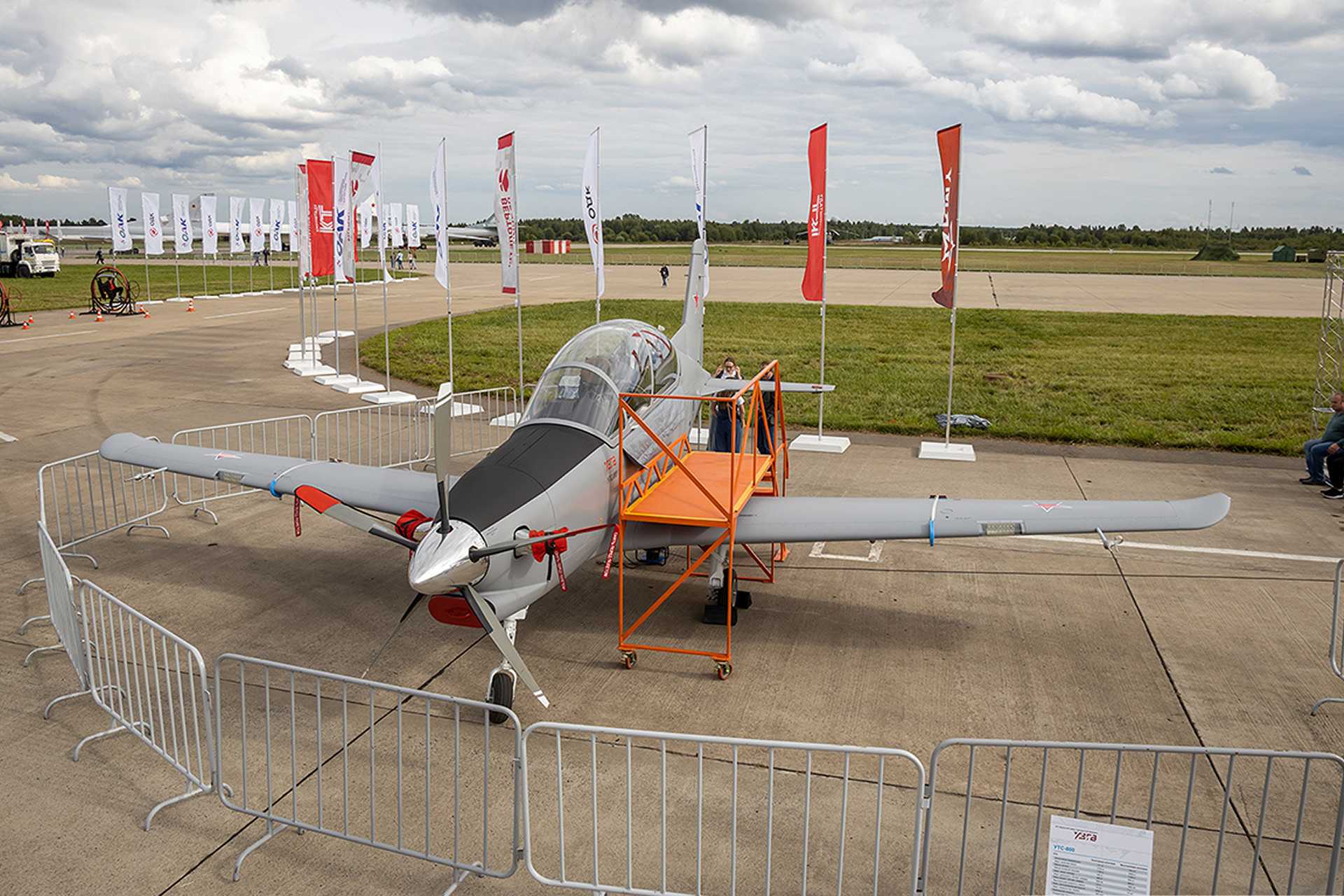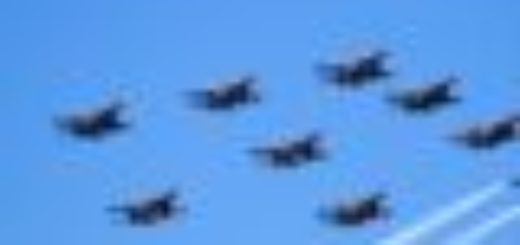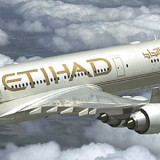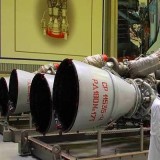Russia begins testing UTS-800 turboprop aircraft to lower training aircraft expenses

{loadposition bannertop}
{loadposition sidebarpub}
As reported by AviaComments on December 28, 2024, the Ural Civil Aviation Plant (UZGA) delivered the first two serial UTS-800 turboprop training aircraft to the Russian Ministry of Defense. These aircraft, designated “06” and “07” with red tail numbers, will be incorporated into flight tests to evaluate their performance and suitability for training cadets in operational and tactical aviation. This delivery forms part of a program initiated by the Ministry of Industry and Trade and the Ministry of Defense to produce a domestically manufactured turboprop trainer for initial and basic flight instruction.Follow Army Recognition on Google News at this link
Since 2021, the UZGA UTS-800 has been undergoing comparative testing with the Yakovlev Yak-152 to determine the future primary training aircraft for the Russian Aerospace Forces. (Picture source: Marina Lystseva)
The UTS-800 has been developed to fill the absence of a dedicated turboprop training aircraft in Russia’s military education system, which has traditionally relied on jet-powered platforms such as the L-29 and L-39. It is designed to perform various training tasks, including initial flight training, aerobatics, navigation, and responding to emergency situations. The program aims to transition to turboprop trainers to reduce operational expenses and maintenance demands while addressing training requirements.
Powered by a VK-800S turboprop engine producing 800 horsepower, the UTS-800 has a maximum speed of 460 km/h, a range of 1,200 km, and an operational ceiling of 6,000 meters. It can operate from both paved and unpaved runways. The tandem cockpit layout situates the student pilot in the front and the instructor in the rear. Safety features include ejection seats, a bird-resistant canopy, and an anti-icing system. To achieve an empty weight of 1.706 kg and a maximum take-off weight of 2.560 kg, the airframe incorporates polymer composite materials to reduce weight and manufacturing costs, while maintaining structural resilience.
The aircraft’s avionics include a head-up display and multifunctional screens to simulate various training scenarios. A direct-action mechanical control system and an aerodynamic configuration designed for predictability contribute to handling characteristics. Features such as controlled approaches to critical angles of attack, safe spin entry and exit, and permissible overloads of +7 to -4 G support its application in aerobatic and navigational training.
The UTS-800 is undergoing comparative testing with the Yak-152 to determine the primary training aircraft for the Russian Aerospace Forces. These evaluations began in 2021 and remain ongoing, with neither aircraft entering full-scale production. The Yak-152, introduced in 2016, is powered by the German RED A03T diesel engine, which is increasingly challenging to procure due to geopolitical restrictions. The UTS-800, by contrast, is designed to transition to the VK-800SM, a domestically developed engine that is still in testing and expected to be certified by late 2024.
The design of the UTS-800 shares similarities with the Austrian DART trainer, including a single turboprop engine and tandem seating. (Picture source: UZGA)
Flight tests for the UTS-800 began on October 28, 2023, at the Aramil military airfield. These tests confirmed stability, controllability, and system functionality, as well as the aircraft’s capacity to perform the maneuvers required for pilot training. Currently, the UTS-800 relies on foreign engines as the VK-800SM engine undergoes further development. The VK-800SM is also planned for use in other aircraft, including the TVRS-44 Ladoga and LMS-901 Baikal, as part of efforts to expand domestic aviation capabilities.
The design of the UTS-800 shares similarities with the Austrian DART trainer, including a single turboprop engine and tandem seating. UZGA has not confirmed any direct influence from foreign designs. These parallels are similar to earlier debates about the Yak-130’s resemblance to the Italian M-346 trainer. The modular design of the UTS-800 simplifies maintenance by providing open access to key systems, reducing inspection times. It can operate from unpaved airstrips and in various weather conditions. It also includes an emergency escape system with ejection seats functional at all altitudes and speeds.
The cockpit layout enables the instructor to monitor and intervene during student piloting. The UTS-800 integrates into a broader training system, including simulators and ground-based tools, enabling scenario-based training, such as system failure simulations and weather condition adjustments. The operational cost per flight hour is approximately 25,000 rubles, contributing to its intended cost-effectiveness.
The UTS-800 is part of broader efforts to replace the reliance on foreign systems in Russian aviation. It competes with the Yak-152, which is affected by engine procurement issues. The SR-10, an earlier intermediate trainer, was discontinued due to similar challenges, highlighting ongoing difficulties in securing engines for training aircraft. Both the UTS-800 and Yak-152 remain under evaluation, with large-scale deployment still pending.
The UTS-800 development reflects an initiative to enhance Russia’s domestic aviation production while addressing the reliance on foreign technologies. UZGA has previously worked on projects such as the LMS-901 Baikal and localized versions of the L-410 aircraft. The VK-800SM engine is central to these efforts, with planned applications in multiple platforms. The program’s progress depends on overcoming current challenges, particularly in engine certification and integration, which will determine the aircraft’s viability for both military and civilian applications.

{loadposition bannertop}
{loadposition sidebarpub}
As reported by AviaComments on December 28, 2024, the Ural Civil Aviation Plant (UZGA) delivered the first two serial UTS-800 turboprop training aircraft to the Russian Ministry of Defense. These aircraft, designated “06” and “07” with red tail numbers, will be incorporated into flight tests to evaluate their performance and suitability for training cadets in operational and tactical aviation. This delivery forms part of a program initiated by the Ministry of Industry and Trade and the Ministry of Defense to produce a domestically manufactured turboprop trainer for initial and basic flight instruction.
Follow Army Recognition on Google News at this link
Since 2021, the UZGA UTS-800 has been undergoing comparative testing with the Yakovlev Yak-152 to determine the future primary training aircraft for the Russian Aerospace Forces. (Picture source: Marina Lystseva)
The UTS-800 has been developed to fill the absence of a dedicated turboprop training aircraft in Russia’s military education system, which has traditionally relied on jet-powered platforms such as the L-29 and L-39. It is designed to perform various training tasks, including initial flight training, aerobatics, navigation, and responding to emergency situations. The program aims to transition to turboprop trainers to reduce operational expenses and maintenance demands while addressing training requirements.
Powered by a VK-800S turboprop engine producing 800 horsepower, the UTS-800 has a maximum speed of 460 km/h, a range of 1,200 km, and an operational ceiling of 6,000 meters. It can operate from both paved and unpaved runways. The tandem cockpit layout situates the student pilot in the front and the instructor in the rear. Safety features include ejection seats, a bird-resistant canopy, and an anti-icing system. To achieve an empty weight of 1.706 kg and a maximum take-off weight of 2.560 kg, the airframe incorporates polymer composite materials to reduce weight and manufacturing costs, while maintaining structural resilience.
The aircraft’s avionics include a head-up display and multifunctional screens to simulate various training scenarios. A direct-action mechanical control system and an aerodynamic configuration designed for predictability contribute to handling characteristics. Features such as controlled approaches to critical angles of attack, safe spin entry and exit, and permissible overloads of +7 to -4 G support its application in aerobatic and navigational training.
The UTS-800 is undergoing comparative testing with the Yak-152 to determine the primary training aircraft for the Russian Aerospace Forces. These evaluations began in 2021 and remain ongoing, with neither aircraft entering full-scale production. The Yak-152, introduced in 2016, is powered by the German RED A03T diesel engine, which is increasingly challenging to procure due to geopolitical restrictions. The UTS-800, by contrast, is designed to transition to the VK-800SM, a domestically developed engine that is still in testing and expected to be certified by late 2024.

The design of the UTS-800 shares similarities with the Austrian DART trainer, including a single turboprop engine and tandem seating. (Picture source: UZGA)
Flight tests for the UTS-800 began on October 28, 2023, at the Aramil military airfield. These tests confirmed stability, controllability, and system functionality, as well as the aircraft’s capacity to perform the maneuvers required for pilot training. Currently, the UTS-800 relies on foreign engines as the VK-800SM engine undergoes further development. The VK-800SM is also planned for use in other aircraft, including the TVRS-44 Ladoga and LMS-901 Baikal, as part of efforts to expand domestic aviation capabilities.
The design of the UTS-800 shares similarities with the Austrian DART trainer, including a single turboprop engine and tandem seating. UZGA has not confirmed any direct influence from foreign designs. These parallels are similar to earlier debates about the Yak-130’s resemblance to the Italian M-346 trainer. The modular design of the UTS-800 simplifies maintenance by providing open access to key systems, reducing inspection times. It can operate from unpaved airstrips and in various weather conditions. It also includes an emergency escape system with ejection seats functional at all altitudes and speeds.
The cockpit layout enables the instructor to monitor and intervene during student piloting. The UTS-800 integrates into a broader training system, including simulators and ground-based tools, enabling scenario-based training, such as system failure simulations and weather condition adjustments. The operational cost per flight hour is approximately 25,000 rubles, contributing to its intended cost-effectiveness.
The UTS-800 is part of broader efforts to replace the reliance on foreign systems in Russian aviation. It competes with the Yak-152, which is affected by engine procurement issues. The SR-10, an earlier intermediate trainer, was discontinued due to similar challenges, highlighting ongoing difficulties in securing engines for training aircraft. Both the UTS-800 and Yak-152 remain under evaluation, with large-scale deployment still pending.
The UTS-800 development reflects an initiative to enhance Russia’s domestic aviation production while addressing the reliance on foreign technologies. UZGA has previously worked on projects such as the LMS-901 Baikal and localized versions of the L-410 aircraft. The VK-800SM engine is central to these efforts, with planned applications in multiple platforms. The program’s progress depends on overcoming current challenges, particularly in engine certification and integration, which will determine the aircraft’s viability for both military and civilian applications.






